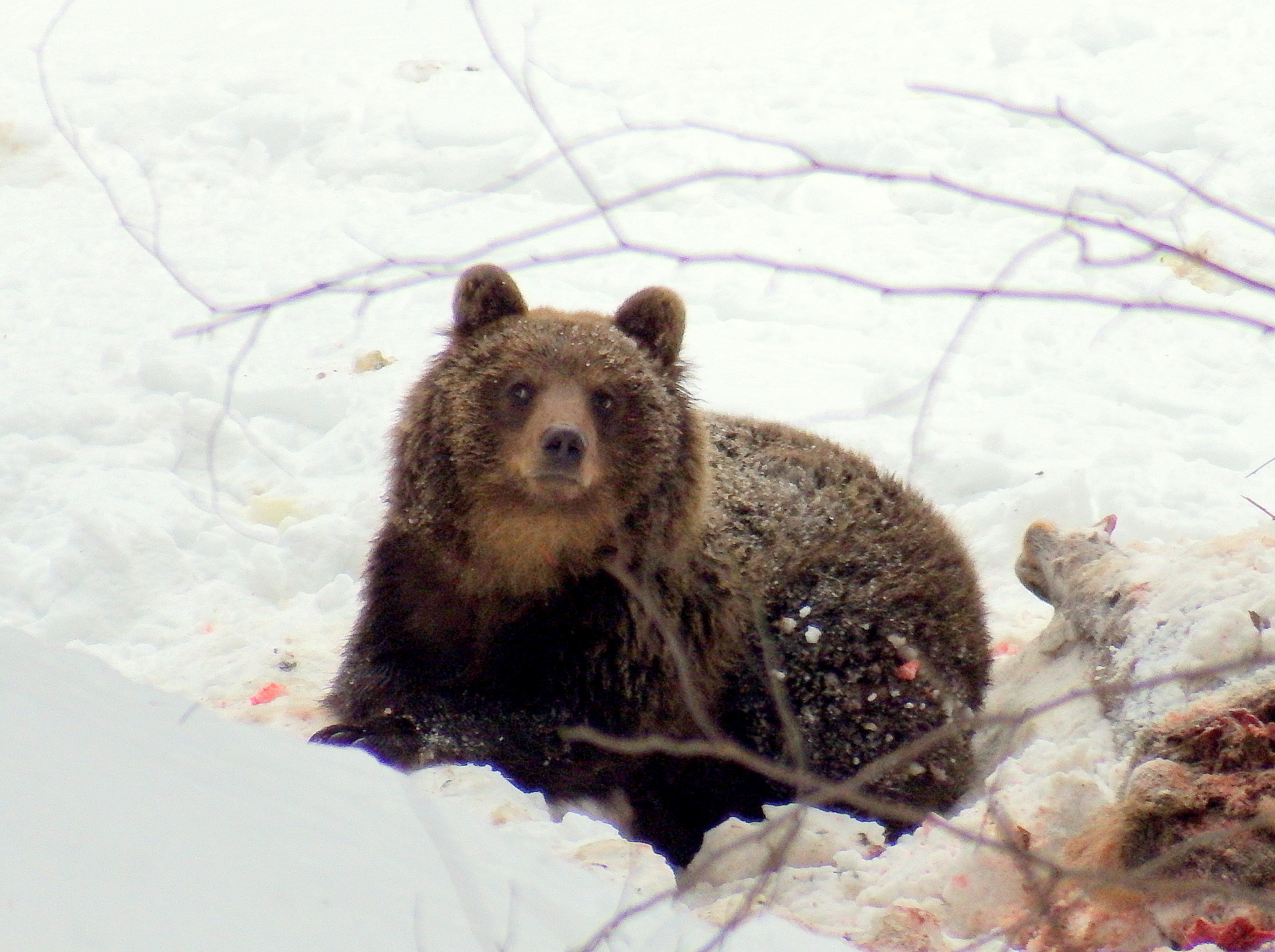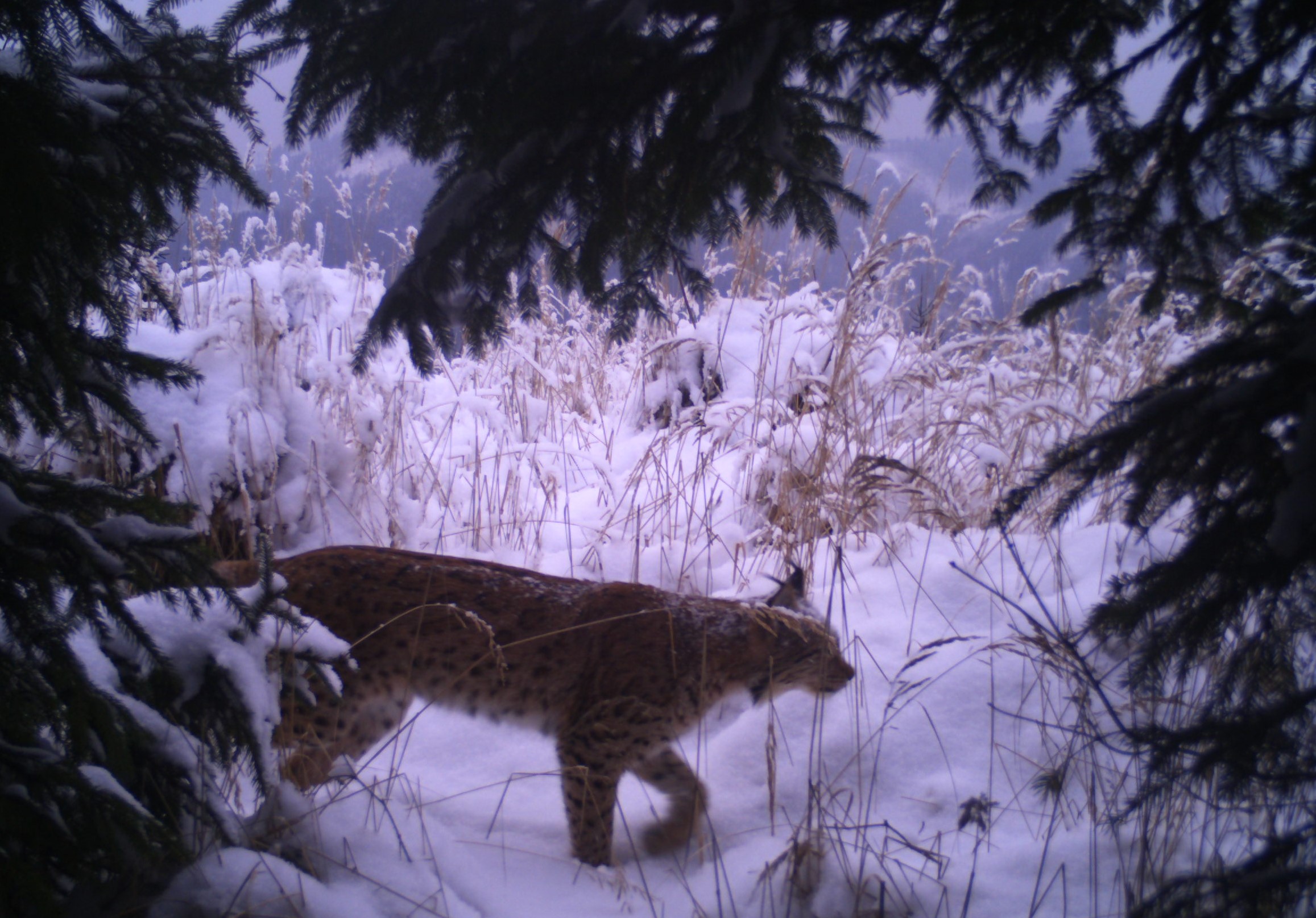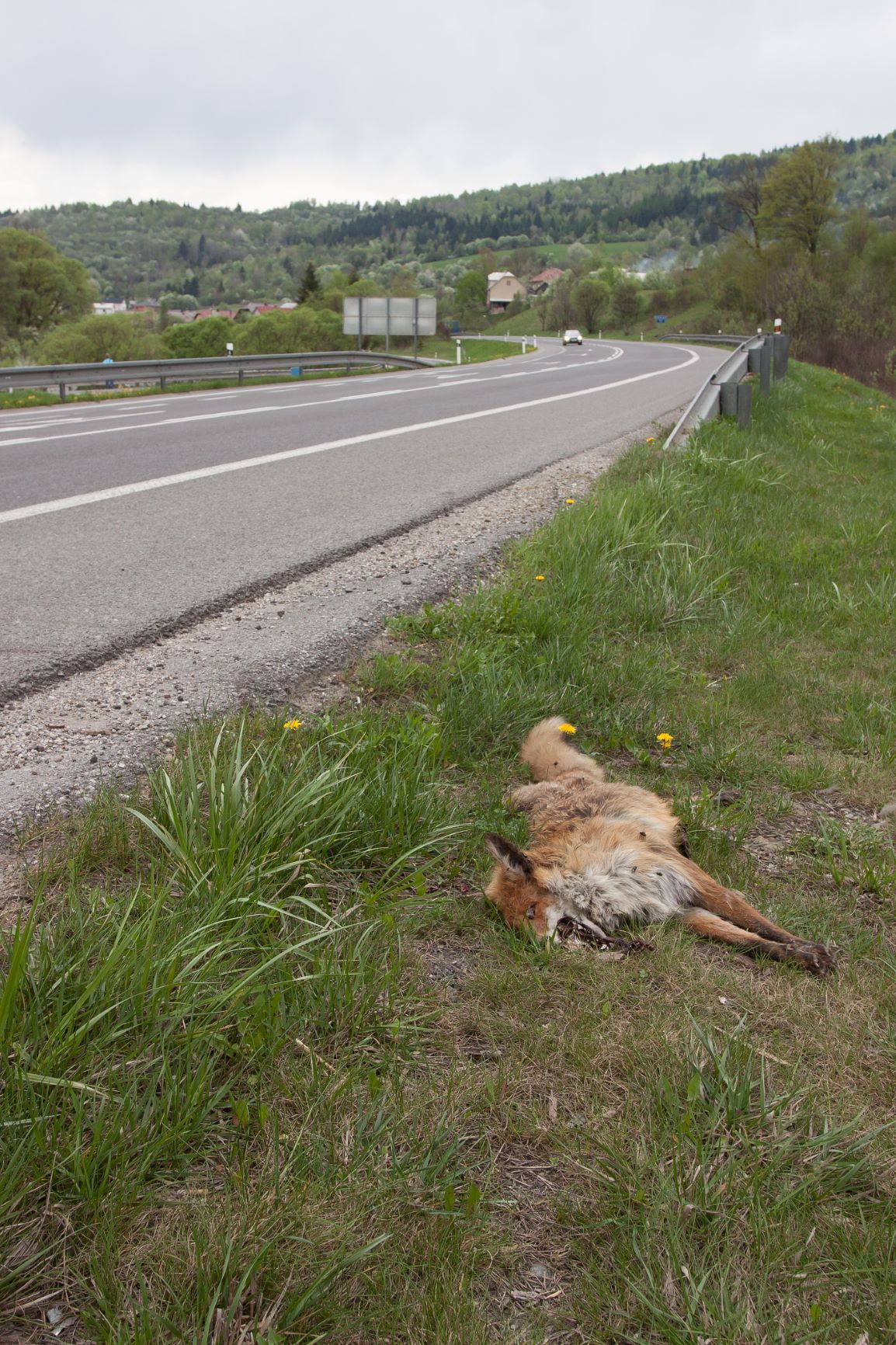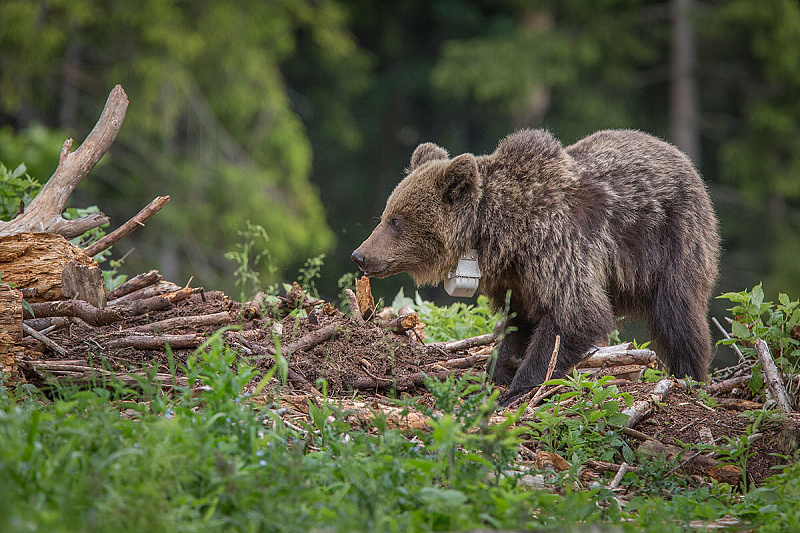ConnectGREEN - Ema. Ľubo. Iwo... Let Animals Wander in the Countryside.
18-09-2019
I am Ema. You recently attracted me by the smell of apples, fish and corn. You caught me and put a telemetry collar on me. But I don’t blame you. I know that you just want to help me. Because we have a problem. Your roads, growing cities, fields and holidays resorts crisscross and dissect our home. The country we once shared is changing. My home is the Slovak-Czech-Polish borderland. I was captured in Beskydy, Czech Republic, but I now live in Javornik, Slovakia. You might glimpse me crossing roads or bypassing settlements...OK, occasionally I enter villages, but it is only because I love honey...But I swear, the houses didn’t have proper fences... Imagine, if someone left a half-eaten chocolate bar in the living room! Would you be able to resist the temptation?

Photo: After being collared, Ema wandered 132 km within 2 weeks, crossed the border from CZ to SK, and swam across the 270 m wide Šanca Reservoir. Our last information indicated that she had found a mate in Javorniky. ©Dana Bartošová, PLA Beskydy
There are about 1200 bears in Slovakia, of which approximately 100 are in the Mala Fatra National Park. As they reach maturity, they begin searching for their living space in the Kysuce Protected Landscape Area, Strážovské vrchy, Javorníky or even in Poland or the Czech Beskydy Protected Landscape Area. “Beskydy is the only place where we can find all three large carnivores - bear, lynx and wolf. Actually, we have one bear now – Ema. Thanks to the remaining protected migration corridors, she is able to live on both sides of the Slovak- Czech border. Sometimes the corridors are less than 100 metres from villages,” says Martin Strnád of the Czech Nature Conservation Agency.
They have migration in their blood
Bears, wolves and lynx – they “have migration in their blood.” People are still not widely aware of the fact that in order to survive they need both protected isolated areas and migration routes between those areas.
“We witnessed rapid urbanisation in Slovakia since the 1990ies. Cities and villages have been growing, and illegal building activities have been spreading, even in protected areas. The European Union is supporting infrastructure development – new highways and faster railways. Consequently, the number of barriers to wildlife migration in the countryside is increasing. In some cases, these infrastructure barriers may completely halt animal migration. If we isolate the population of large carnivores in the protected areas they can live within them for a short time, but not survive in the long- term,” explains Peter Drengubliak from Kysuce Protected Landscape Area.
Thanks to international projects such as TRANSGREEN and now the ConnectGREEN Project, we can more effectively map migration corridors and better demand their protection. Ema’s story shows us that international cooperation in this field is essential. “We now have the results from the TRANSGREEN Project, and based on this information, we launched the new ConnectGREEN Project. In TRANSGREEN we focused on infrastructure as a threat to migration corridors. In Slovakia, we mapped animal mortality in the Kysuce Protected Landscape Area, Malá Fatra National Park, Slovenský kras National Park and the Cerová vrchovina Protected Landscape Area. That data contributed to the decision to build the new ecoduct in Kysuce. However, the project demonstrated that it is important to focus on animal migration even sooner – during the spatial planning period - and that is exactly our aim of ConnectGREEN,” explains Miroslava Plassmann, CEO of WWF-Slovakia. WWF-Slovakia is leading the project in Slovakia, together with partners from the Slovak State Nature Conservancy, Slovak Environment Agency and spatial planners from the Slovak University of Technology.
A deadly dangerous game
I am Ľubo. For us lynx, it is not unusual to roam hundreds of kilometres or more per day when we are searching for a mate. You must be familiar with that feeling– something is pulling you and you can’t resist. Sometimes I might even have two or three girlfriends in my home territory. You might spot me with them occasionally, but most of the year I am just wandering around by myself. I could be very close to you but you would never know. When I catch my prey I may become lazy and less cautious and hide myself close by. Cats are said to be afraid of water, but we lynx don’t mind at all. I cross the river many times.... It is definitely less dangerous than trying to cross some of your roads...

Photo: Lynx along the Czech and Slovak border have been monitored for more than 10 years by Hnutí Duha. Ľubo (in the picture) died, but Heřmina and Draža are already 9 years old and have cubs. ©Hnutí Duha
"In the Kysuce Protected Landscape Area there are about 23 lynx and 13 wolves, but they may migrate into other nearby protected landscape areas and national parks. “Even among animals there are braver and more careful types, and Ľubo belonged to the first group. When he was searching for mate, he even crossed a railway. We believe that he was killed by poachers or died on a very busy road close to Povina, a very important migration corridor in Kysuce,” says Peter Drengubliak.
According to the latest statistics, more than 14,000 cars/day use this road. Urbanisation has always been a part of the river valley, and that is also visible in Kysuce. In the Kysuca River Valley, cities and villages are in close proximity to each other. In addition, there are the roads, a railway line, and now a highway is being built. “It is admirable that Ľubo was able to cross the busy road and two-track railway at least 7 times. Such brave individuals show us where the most important ecological corridors are, and where we should concentrate our efforts to protect them to help less capable individuals,” says Miroslav Kutal of Hnutí Duha.

Photo: One of the last migration eco-corridors in Kysuce, Horelica-Oščadnica. Dead animals are still often found here. ©Peter Drengubiak, Kysuce Protected Landscape Area
Sad numbers
Mala Fatra National Park is surrounded by roads and railways, and a new highway is now being built here as well. “50 bears have been killed on the roads and railways around our national park since the 1997. In 2019, 6 bears have already been killed. The cause for this type of animal mortality represents about 43% of all known mortality in the Mala Fatra National Park,” says Michal Kalaš, Mala Fatra National Park. On the busy road below Strečno, almost 27,000 cars pass by every 24 hours. Research done in Slovakia in 2016 by SNCA, the Carpathian Wildlife Society and the National Forest Centre shows that male bears can manage to cross roads with daily traffic less than 5,000 cars, while female bears find it more difficult and in general, can only cross with more relative ease roads with less than 4,000 daily traffic. If the bears actually take the risk, they usually cross in the late summer and autumn evenings when the corn fields temp them. Those that die under these circumstances are most often cubs and inexperienced young bears. The Slovak Railway Company registered 857 collisions with animals in 2019, while police statistics extremely underestimate - 76 cases last year including two human deaths and 9 injuries. The discrepancy between the two agencies is because the police only register collisions causing more than 4,000 Euro in damage. On the other hand, a third source, a leading insurance company in Slovakia (Allianz) has registered 2,864 collisions with animals during the last years. Tellingly, all of these statistics only include collisions with larger animals (large carnivores, wild boar, roe-dear..), while thousands of untracked smaller animals are also dying (birds, bats, reptiles, amphibians) because migration routes have, until now, not been adequately taken into consideration during infrastructure and special planning.
Green bridges and viaducts
I am Iwo. I am five years old. For bears, this is the best age to start looking for a mate. I was born in Tatra National Park in Poland, but I heard much about the beauty of Slovak girls. I decided to discover the truth for myself. Can any of you say that you wondered 373 km for three weeks to find the girl of your dreams? I did. I left Tatra National Park, walked entirely across Slovakia, and then across another border into Hungary and Aggtelek National Park. I spent one week in the area but didn’t find the love of my life. But then I heard about Bieszczady National Park in the southeast of Poland - a perfect place for bears and wolves. Bieszczady is a quiet place where hunting is prohibited, poaching punished, wood harvesting is sustainable, and people appreciate the calm and nature. I am going to find her there…

Photo: When Iwo woke up from hibernation in the High Tatras he went through Slovakia to Hungary and back to Poland within 3 weeks. But even then, he carried on to Ukraine until the border with Romania and then back to Poland. His migration route is an example of why we need to be aware of migration corridors throughout the entire Carpathians. Telemetry tracking of Iwo’s progress was done by Tatra National Park in Poland and the Slovak Tatra National Park. ©Ivan Godál
Iwo is a record holder. On his journey from Tatra National Park to Hungary he overcame roads, railways, swam across the Vah River and then across the Domaša Reservoir. He crossed highways as well. On his way to Hungary he used the Mengusovce Ecoduct, and on the way back to Poland he found a place near Kosice where the highway goes over the local river and under the highway bridge.
Mengusovce Ecoduct is one of only three ecoducts in Slovakia. Neighbouring countries have many more. For example in the Czech Republic there are more than 10 ecoducts, with many more planned; Austria plans to build 20 new ecoducts by 2027; and Croatia has 10 ecoducts on Highway A1 alone.
Spatial planning as a solution
The National Motorway Company has a camera at one ecoduct with a sign that says: “Bears, wolves and deer are very often seen here.” To prevent accidents, the National Motorway Company fenced in all the highways in Slovakia. However, while fences can improve safety, they do not solve migration issues. “It is important that the fences lead animals to underpasses or green bridges, otherwise they only act as new migration barriers,” says Miroslava Plasmann from WWF-Slovakia. We need functional legislation which obliges infrastructure investors to take animal migration into account from the beginning, during the spatial planning stages - for example, incorporating green bridges or other solutions. This is already happening in the Czech Republic. After lengthy negotiations, the important migration corridor in Beskydy between the villages of Jablunkov and Mosty u Jablunkova is finally protected in the municipal plan. Without the ecocorridor in Beskydy we would not have Ema the bear, or indeed hardly any other large carnivores from Slovakia.
Written by Andrea Settey Hajduchová, WWF-Slovakia
